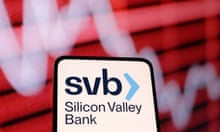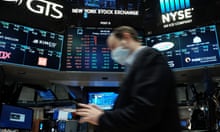The collapse of Silicon Valley Bank (SVB) has inevitably conjured up memories of September 2008 when the bankruptcy of Lehman Brothers prompted a market meltdown, a global recession and a dramatic easing of policy from the world’s central banks.
Fears that SVB is not the only poorly regulated bank to be feeling the effects of steadily rising US interest rates have led to a rethink of what will now happen to official borrowing costs. Ultimately, that depends on whether this really is a “Lehman’s moment”, or a re-run of the stock market crash of 1987 or the failure of the hedge fund Long Term Capital Management in 1998, when the market turmoil was temporary.
On both those earlier occasions, the Federal Reserve was spooked into cuts in interest rates that proved unnecessary and which it later came to regret. As such, the fact that SVB has gone bust at a time when US inflation remains stubbornly high presents the Fed with a real headache. The Bank of England and the European Central Bank face the same dilemma.
In normal circumstances, the Fed would have no hesitation in continuing to raise interest rates because core inflation – excluding food and energy – stands at 5.5% and is coming down at a glacial pace. Only last week the Fed chair Jerome Powell dropped a hint a fresh 0.5 percentage point increase was on the way.
But that was before the crisis at SVB. Financial markets have reacted badly to the failure of the 16th biggest bank in America, fearing it could be the first of many. Peter Warburton, chief economist with the research group Economic Perspectives thinks they are right to be worried, because the Fed has miscalculated the impact of the double whammy of higher interest rates and the selling of bonds under the process known as quantitative tightening.
“Short-sellers and deposit withdrawals have brought down SVB, but the problem is systemic. The Fed has been removing chairs and there is no longer adequate seating capacity,” Warburton said.
Yet the Fed insists it has taken steps that will ensure there is no contagion. It has guaranteed all deposits at SVB and announced a new generous funding programme to help banks running into cashflow problems. On top of that, it says the banking system as a whole has bigger capital buffers to offset losses than it had in 2008. If all that is true, the Fed has no reason to soften its aggressive interest-rate stance.
In reality, the markets think the chances of a 0.5 percentage point increase in rates at the next Fed meeting later this month are now virtually zero, and the choice will be between a 0.25 percentage point rise or doing nothing. There are reasons for a cautious approach.
after newsletter promotion
For a start, financial market conditions will tighten as a result of the crisis at SVB, with banks making credit more expensive and less freely available. That will have a similar effect on activity as an increase in interest rates.
Secondly, the full impact of the increase in official US interest rates from just above zero to 4.5-4.75% will take time to play out. The Fed will be alive to the risks of a repeat of the early 2000s, when the economy seemed to be shrugging off the impact of 17 quarter-point increases in rates only eventually to hit the wall.
Ultimately, the markets will decide what happens next, If they calm down, rates will rise by 0.25 percentage points later this month. If the turbulence continues, despite the risk that it will be storing up a bigger inflation problem further ahead, the Fed is unlikely to risk it.










